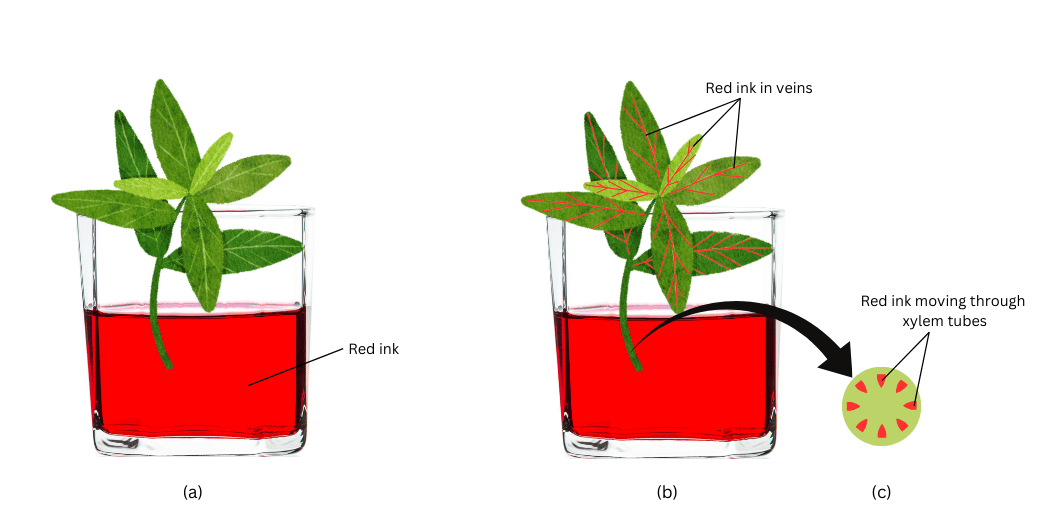3. Complete Activity 7.3 (Page 78). We would require a glass tumbler, water, red ink, a tender herb (e.g., Balsam), and a blade for this activity. Pour water to fill one-third of the tumbler. Add a few drops of red ink to the water. Cut the base of the stem of the herb and place it in the glass as shown in the figure. Observe it the next day. Does any part of the herb appear red. If yes, how do you think the colour reached there? You can cut the stem across and look for the red colour inside the stem.
Answer:
The Activity 7.3 should be carried out in the following way:
Aim: To observe and explain the movement of red ink to the different parts of the plant.
Materials Required: Glass tumbler, water, red ink, a tender herb, blade.
Procedure:
(i) Fill one-third of the glass tumbler with water and add a few drops of red ink to the water.
(ii) Cut the base of the stem of the herb and place it in the glass as shown in Figure (a). Wait for one day and observe what happens to the plant.

Observation:
You will observe that:
- The veins of the leaves turn red in colour as shown in Figure (b).
- The cross section of the cut stem also contains traces of the red colour as shown in Figure (c).
Conclusion:
We can conclude that:
- The stem conducts water containing dissolved red ink.
- Water containing the dissolved red ink travels through narrow tubes of vascular tissue called xylem inside the stem and reaches the leaves and other parts of the plant. This is why the red ink is present inside the stem and in the veins of the leaves.
- In healthy plants water containing dissolved minerals is conducted through the stem to all parts of the plant, much like the red ink in this activity.
“Complete Activity 7.3 (Page 78). We would require a glass tumbler, water, red ink, a tender herb (e.g., Balsam), and a blade for this activity. Pour water to fill one-third of the tumbler. Add a few drops of red ink to the water. Cut the base of the stem of the herb and place it in the glass as shown in the figure. Observe it the next day. Does any part of the herb appear red. If yes, how do you think the colour reached there? You can cut the stem across and look for the red colour inside the stem.” – Solved.
Related Links:
Solution to Extended Learning Question 1
Solution to Extended Learning Question 2
Solution to Activity 7.1
Solution to Activity 7.2
Solution to Chapter 7 Transportation in Animals and Plants


